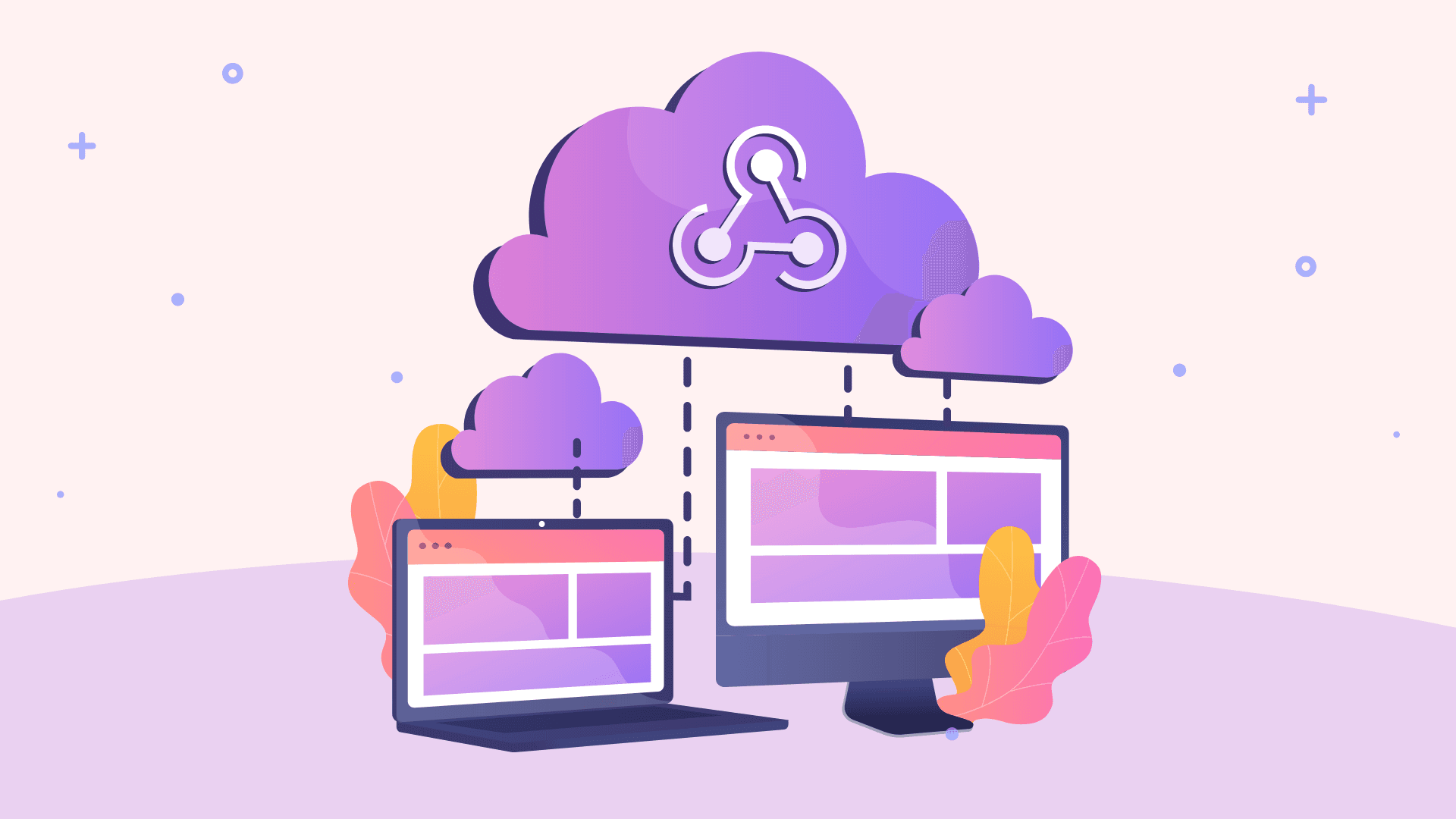Nov 23, 2023 | 6 minutes
What Are Webhooks and Why Would You Use Them?
A webhook is a way for an app to let other apps (or the users of those apps) know that something has happened. Read our short webhooks guide to learn more!

It’s a critical resource for enterprises that need real time updates to be made across multiple applications.
A streamlined tool for retailers aiming to deliver a seamless experience from the moment customers click ‘checkout’ to the moment their order arrives.
And a must for influencers to instantly upload reels to Instagram the second they publish on TikTok.
So exactly what are webhooks? They’re an easy-to-configure resource that enhances communication between the applications you use every day. Read on to learn how webhooks work and the ways you can benefit from webhook technology, in this article we will talk about the following:
What are webhooks and how webhooks work
Differences between webhooks and API calls
Apps that support webhooks
How to set up webhooks
Learning resources to create your first webhook
How to test webhooks
FAQs about webhooks for new users
What are webhooks and how do they work?
What is a webhook?
Webhooks are one app’s method of providing another app with real-time information about an online event. In simple terms, a webhook is a technology that sends information when triggered by an event.
A radar system is a great analogy for anyone learning how webhooks work: the radar system (webhook) is designed to pick up specific aircraft signals (event-specific data). When a signal is detected, the radar system immediately notifies a radar operator (the user).
Does your team rely on Discord? Then check out Make’s Easy Guide to Discord Webhooks.
The event-specific data could be virtually anything: a user making edits on a shared document or a customer submitting a form on a website are simple examples.
Webhook technology works when user-defined HTTP callbacks push data about an event to a URL configured to the webhook. Though similar, they’re different from regular callbacks which typically communicate through a single app or platform. There’s also a big difference between webhooks and APIs.
What’s the difference between APIs and webhooks?
APIs are exceptionally useful and understandably growing in popularity. At first glance, a webhook may seem like an alternative to an API call, but in reality, their functioning principles are different.
An API operates by polling data, which means it checks for new data and retrieves it only when it identifies the new data.
Webhooks are triggered by an event, not simply the presence of new information. When an event happens, the webhook sends the corresponding data payload in real-time to the targeted URL.
One of the most important differences between webhooks and APIs is in the data delivery’s timeliness. APIs can be scheduled; webhooks cannot. APIs can be scheduled in short time intervals, but webhooks will always be instantaneous.
Take Make’s scheduling function, for example. Let’s imagine that you’re managing your company’s social media feed and want to monitor comments on a specific Facebook account you follow:
First, use Make’s “Watch Comments” module in a scenario. The “Watch Comments” module is effectively the Make API call to the Facebook API.
Then, set a timing interval. You can set the interval however short or long you prefer, for example every five minutes.
Next, the Make API call to the Facebook API will check for new tweets. The module monitors the account you’re following throughout the scenario, looking for new comments every five minutes.
Finally, if a new comment was posted within those five minutes, the API will identify them and show them to you. The API will pull all of the data you wish to see, in this case new comments, and only that data from the most recent time interval. How are webhooks different?
Webhooks cannot be scheduled, so you wouldn’t get the latest comments every five minutes. Instead, webhooks are built to deliver the data you’re looking for the moment it’s populated. If you established a webhook for comments from that account, you’d see them in real time.
Why use a webhook: Examples and use cases
Think of webhooks as another building block for your digital infrastructure. They enable you to execute multiple commands and constantly receive the most up-to-date information without requiring a heavy technical demand.
Basically, they streamline information delivery and allow you to instantly act on that information.
Think about how critical it is to follow up with prospective customers the moment they send an enquiry through a web form on your contact page. A webhook can connect that form to a Slack channel that collects these customer requests and makes them available to your sales team immediately.
You can also configure webhooks with other apps to identify a host of other online events, allowing you to:
Automatically populate spreadsheets with incoming data.
Send notifications to different people about an event.
Create document templates with dynamic data.
Add new records to CRMs.
(Un)subscribe people from your newsletter.
Create tasks on project management tools.
For example, some of our clients use Make modules to create a contract template from data received through a webhook attached to a web form.
First, they connect two Make modules, such as our webhook module and our “Create a document from a template” Google Docs module. Then, each time a form is received, a contract template is automatically created with the data from the web form.
But webhook success in your enterprise lies in the answer to two important questions: Do the apps you use support webhooks?
And, if so, what can you do with the information you get from webhooks?
Which popular apps support webhooks?
The good news: virtually every app allows incoming data from webhooks, including:
Instant messaging apps like Slack (through the “Events” API)
Web forms like Typeform, Google Forms, JotForm, and Gravity Forms
CRM platforms like HubSpot and Pipedrive
Chatbot builders like ManyChat and Chatfuel
Social media platforms like Facebook and Twitter
Code repositories like GitHub
Project management tools like ClickUp, Trello, and Jira
And many others, including Make.
The challenge: not all apps allow the posting of data through webhooks, which is why it’s important to understand how webhooks work but also how to use webhook integration in a way that amplifies your operations.
How to set up webhooks
Setting up webhooks with Make is very user-friendly, even if it’s your first time using webhook technology. You can typically create app-specific webhooks through the app itself. To create custom webhooks, you can insert a Make custom webhook module into a scenario, set up the webhook data structure, and begin scheduling webhook processing to test things out.
How to test webhooks
Ineffective webhooks don’t cater to you or your prospects, which is why it’s important to know how to test webhooks before relying on them. We suggest first creating a webhook and integrating it with the apps that you receive the most user engagement from.
For example, if many of your potential clients reach out to you via a webform, you should create and test those webhooks first. Don’t wait for a customer to use it; execute the function yourself and create a webhook call by having an employee fill out the webform.
When you add a module into a Make scenario, our platform automatically executes the scenario when webhook data is received. If you would rather process groups of data at once instead of dealing with every packet of data as soon as it’s received, you can use Make to schedule webhook processing times. For instance, you could edit the scenario settings to store all incoming webhook data in a queue then only process and deliver it at a specifically scheduled time.
Webhooks learning resources
The next thing you should read when learning about webhook technology is “Web hooks to revolutionize the web” written by software engineer and Glider Labs co-founder, Jeff Lindsay. This article, written in 2007 and available on the Internet Archive, will help you build a foundation for webhook meaning and how webhook technology could be leveraged.
Once you get familiar with how webhooks work, you should then learn how to create webhooks in the apps that are keystones of your day-to-day operations. Most app developer docs will state if they support webhooks and how to set up a webhook or “outgoing webhook”. Take a look at Typeform’s developer docs as an example.
When you’re ready to learn how to set up webhook integrations, Make has a dedicated help docs page that explains how to create webhook integrations through our platform. We provide step-by-step instructions on how to create and configure custom webhooks, work with different data formats, and process incoming webhook data.
We also have a number of pre-packed templates that feature webhooks for you to explore.
Make webhooks work for you
Webhooks are your company’s information radar system, searching the digital skies for the data you need and landing it instantly into the hands (or laptops) of your air traffic control team.
Webhooks are shortcuts that empower developers and no-coders to streamline information transmission without the need for complicated code. Instead of relying on software solutions that might not work in the context you need, trust webhooks to get the job done.
The team at Make does and we’d love to connect you to the wonders of webhook technology. Try out Make to discover how we enable businesses of all sizes to send incoming webhook data to 1,500+ apps and build spectacular automated workflows in record time.
FAQs: What you need to know about webhook technology
What is the difference between API and webhooks?
The biggest difference between APIs and webhooks is the frequency and timing with which data is communicated. API calls can be scheduled at varying intervals; API calls are made and only deliver data at these intervals. Webhooks are event-based calls; it delivers data instantly and only when an information event happens.
Is a webhook just a HTTP request?
Yes, webhooks are specific HTTP requests. A technical definition of a webhook is an HTTP-based callback function that allows data communication between two separate apps.
Are webhooks frontend or backend?
A webhook can be configured to communicate information from a frontend source to a backend source. For example, a webhook can communicate data from a landing page, such as a web form, and send that information to a Discord server or Slack channel.
What are the disadvantages of webhooks?
The two largest disadvantages of webhooks involve the applications themselves. First, if an app doesn’t support webhook technology, then webhook technology won’t aid you. Second, webhook calls are abandoned if not responded to, so if an app you rely on has its service interrupted, your webhooks will fail.
Is a webhook a callback?
A webhook and a callback are not the same, though they’re very similar. Both are used for communication. Callbacks are typically used within a single app or interface while webhooks are typically used to communicate between separate apps or platforms.
Ready to make the automation revolution happen?

